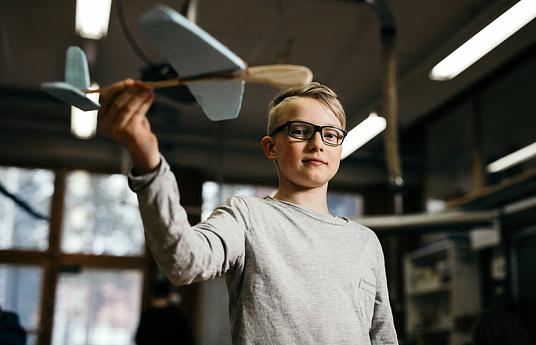The expression ‘too many cooks spoil the broth’ may come to mind when talking about co-teaching. Surely having more than one teacher leading a class will result in a mismatched lesson, disruptive chaos, or even a clash of egos?
However, co-teaching could actually be the answer to the problems facing the teaching profession. In many countries teachers work long hours which aren’t reflected in their often limited salaries, with many people who are similarly qualified being paid more in other areas. We’ve seen news articles about the stress teachers face, the high dropout rate of new teachers, and teacher shortages around the world. We need to look at our teachers and see how we can help them, and perhaps co-teaching could tackle a few of the above problems.
But first, what is co-teaching?
The idea is simple. Two teachers work together with one classroom of pupils – sharing the planning, organisation, delivery and assessment of that class and their learning.
Although originally designed to help special needs students, it can be useful for students (and teachers) of all backgrounds and needs. Having this specialist attention can benefit students, meaning that different learning styles are catered for, but it can also have a great benefit for teachers.
So how does co-teaching work?
Two of the classic ways that co-teaching has been employed, is the one teaches – one assists or observes model. In this, co-teaching is a way of incorporating children with special educational needs into general classrooms. The ‘assisting’ or ‘observing’ teacher helps those who have special needs or observes how they learn so that the learning can be adjusted to their needs; the other teacher focuses on the rest of the class.
Alternative teaching is another similar model of co-teaching, where the assisting teacher takes the small group of students who may struggle keeping up with the rest of the class and either teaches them something entirely different to the rest of the class, or gives special support to the group.
In these formats there is one clear leader in the classroom, and the assisting role is often filled by someone who has particular training in special needs education, rather than general education.
However, it is the contemporary methods of co-teaching that shake up the traditional classroom atmosphere. Station teaching, parallel teaching and tag-team teaching all see both teachers taking an equal role in presenting the lessons to the class.
Station teaching involves both teachers simultaneously presenting part of the lesson and students move between the two sides of the class. Being in smaller groups means that the lesson can be tailored to the individual students whilst both of the teachers can play to their strengths by taking the part of the lesson that utilises their skills and knowledge.
Parallel teaching splits the class in half, with both teachers teaching the same thing to both sets of students, but teaching them in different ways to suit each group. And tag-team teaching means that both teachers teach the whole class but they take the lead on different areas which play to their own strengths.
With technology developing so fast that even people in their twenties feel out of touch compared to teenagers, co-teaching could be a way to pair more experienced teachers with younger teachers who may have a better grasp on contemporary kids culture. Combining experience with relevancy could help to bring lessons alive and link education to the real worlds of the kids in school. Being paired with a more experienced teacher could also help younger teachers to handle the extraordinary pressures that come with teaching, and could perhaps prevent (or at least reduce) the sharp drop-out rate of new teachers.
Even though ‘too many cooks spoil the broth’ is a well-known saying that could be attributed to this phenomena, we could also take the standpoint that ‘two heads are better than one’. There surely would be nothing better than to have the experiences, talents and expertise of two teachers instead of one in our classrooms.
Denmark and Finland are already on the co-teaching bandwagon.
This style of teaching is already being employed and we’ve heard that it’s been working. Allan Kjaer Andersen, Principal of Ørestad Gymnasium in Copenhagen, told us ‘The most important thing, in which we have been successful in doing, is to organise teachers in teams. They help each other, inspire each other, learn from each other and produce together. (...) I think the collaboration of teachers is the key to every change in school.’
Finland, as we explored in our last blog, has incorporated co-teaching into it’s new national core-curriculum, and will see teachers designing and planning their lessons together as well as teaching them together. Co-teaching is the new trend in the teaching profession it seems.
The Verdict.
Building a network for teachers can be supportive and inspiring. In this ever shareable world, it seems ridiculous for the teaching profession to be the only one where ideas aren’t shared and spread. So why limit this to schools? Why not the share and learn globally?
We recently looked at the influence of globalization on education, and it seems that if teaching is going to keep up with the rest of the world – and if we are preparing our students to engage and interact with people from all communities – surely it makes sense for teachers to share ideas and techniques globally too. It is slightly contradictory to inspire a love of learning and global communication in our kids, if we do not do this ourselves. We should set the example.
If the education system is to keep up with the fast-evolving world around it, it needs to make sure the people on the ground, teachers, are up to date and can make education relevant for today’s children. But co-teaching is so much more than that. It can give our teachers a community, increase the individual attention given to pupils, and provide an inspiring support network which utilises the unique talents and skills of each teacher.
---
For similar reads:
- A Very Global View on Education: What We Learnt
- An Introduction to the Finnish Way of Educating
- The Evolving Role of the Teacher
For more on this issue, read these articles:




